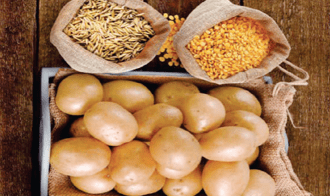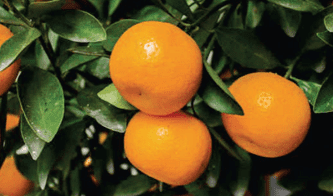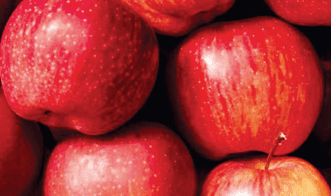 dairy
dairy
 horticulture
horticulture
 fisheries
fisheries
Nutritious Food: The Cornerstone of a Healthier India
The lush rural stretches of India don't just make fantastic backdrops for epic Bollywood love stories. This is where the elements of nature conspire with the people of the land to nourish the rest of the country. Nutrition is the science of food and its relationship to your health.
To live a healthy life, one needs to consciously eat foods that provide essential nutrients needed to energise and fortify the body. Thanks to advancements in technology, infrastructure and communication that came with the turn of the century, India, which was once known for only producing food grains, has diversified into the cultivation of high-value nutritious crops like fruit and vegetables. Today, the country's growth is driven by high-value segments such as dairy, horticulture and inland fisheries, which ensure that farmers have year-round income. 60 per cent of India's agricultural GDP comes from them. In 2014-15, the production of fruit and vegetables overtook Indias food-grain production by 31 million tonnes. One of the many reasons for the growth in Indian horticulture is awareness about the impact of food on one's health, which has led to an increase in demand. So, it's safe to say that India is well on its way to becoming a healthier nation.
60%of India's agricultural GDP comes from high-value segments such as dairy, horticulture and inland fisheries
In 2014-15, The production of fruit and vegetable overtook indias food grain production by.
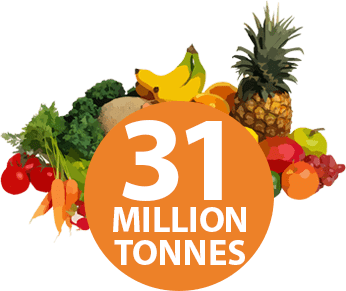

795
MILLIONPeople Worldwide Are Undernourished
162
MILLIONchildren still suffer from stunted growth, most of them in Sub-Saharan Africa and South Asia.

Sub-Saharan Africa
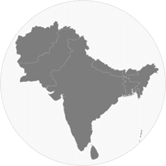
South Asia
Reshaping Agri-Food Systems for Improving Nutrition
Shenggen Fan, Director General, International Food Policy Research Institute December 2016
For the past several decades, the world has made tremendous progress in reducing hunger and undernutrition. The percentage of hungry people were reduced from 23.3% in 1990/92 to 12.9% in 2015 in the developing world. In India, the percentage declined from 23.7 to 15.2% during the same period. Between 1990 and 2015, child stunting prevalence globally was reduced from 39.6% to 23.2%, and the number of children affected fell from 255 million to 156 million. In India, Within just 8 years, the prevalence was reduced from 48% in 2005-06 to 39% in 2013-14.
However, challenges remain grave. The current agri-food systems have not succeeded in providing a nutritious diet for all our people. Worldwide, an estimated 2 billion people suffer micronutrient deficiencies and 795 million people are undernourished. Although undernutrition is slowly declining, 162 million children still suffer from stunted growth, most of them in Sub-Saharan Africa and South Asia.
We must reshape our agri-food systems for improving nutrition. The 2016 Global Food Policy Report, a flagship publication of the International Food Policy Research Institute (IFPRI) proposes key policy ptions to achieve sustainable development goals (SDGs) through new food systems. The key components of the new food systems are nutrition led or nutritionally driven and the ways forward include the following:
Developing countries must re-prioritise agricultural R&D investments to produce more nutritious and diverse food crops such as fruit, vegetables, beans and dairy products. Evidence has shown that when farmers diversify their production to these crops, the nutrition status of family members, particularly children and women, improves significantly. Moreover, increased production of these crops has also reduced price levels, leading to improved access of consumers to more nutritious foods. R&D investment in bio-fortification, which boosts nutrient levels in varieties of staple food crops, must also be increased. We have seen significant improvements in the Vitamin A intake from communities that have adopted bio-fortified Vitamin A sweet potato
Current subsidy policies must be reformed. Globally, US$500 billion are used to subsidise cereal crop production every year through water, energy, fertilizer and output price supports. These subsidies are not economically efficient nor are they environmentally sustainable. Worse, they do not even promote nutritious food production. They should be reformed to support the production of nutritious food like fruit, vegetables, beans, and dairy products.
Social protection should also be linked to improvements of diets, nutrition and health of vulnerable families. IFPRI studies show that if these programs are linked to asset building, access to agricultural technology and extension, the impact on reduction in hunger and undernutrition can easily double. Gender plays an important role in building nutrition-driven agri-food systems, given womens important roles in agricultural production and as consumers and caregivers. IFPRIs gender-related research shows, for instance, that empowering women in agriculture can help improve their households dietary diversity and reduce child stunting. In conclusion, IF PRI is committed to using its Compact 2025 initiative to support national governments, global initiatives and various other stakeholders to reshape food systems for nutrition using its data, evidence, knowledge and research.
In India, the percentage of hungry people has decreased from
23.7%(1990-92)

(2015)
Child stunting in India has dropped from
48%(2005-06)

(2013-14)


